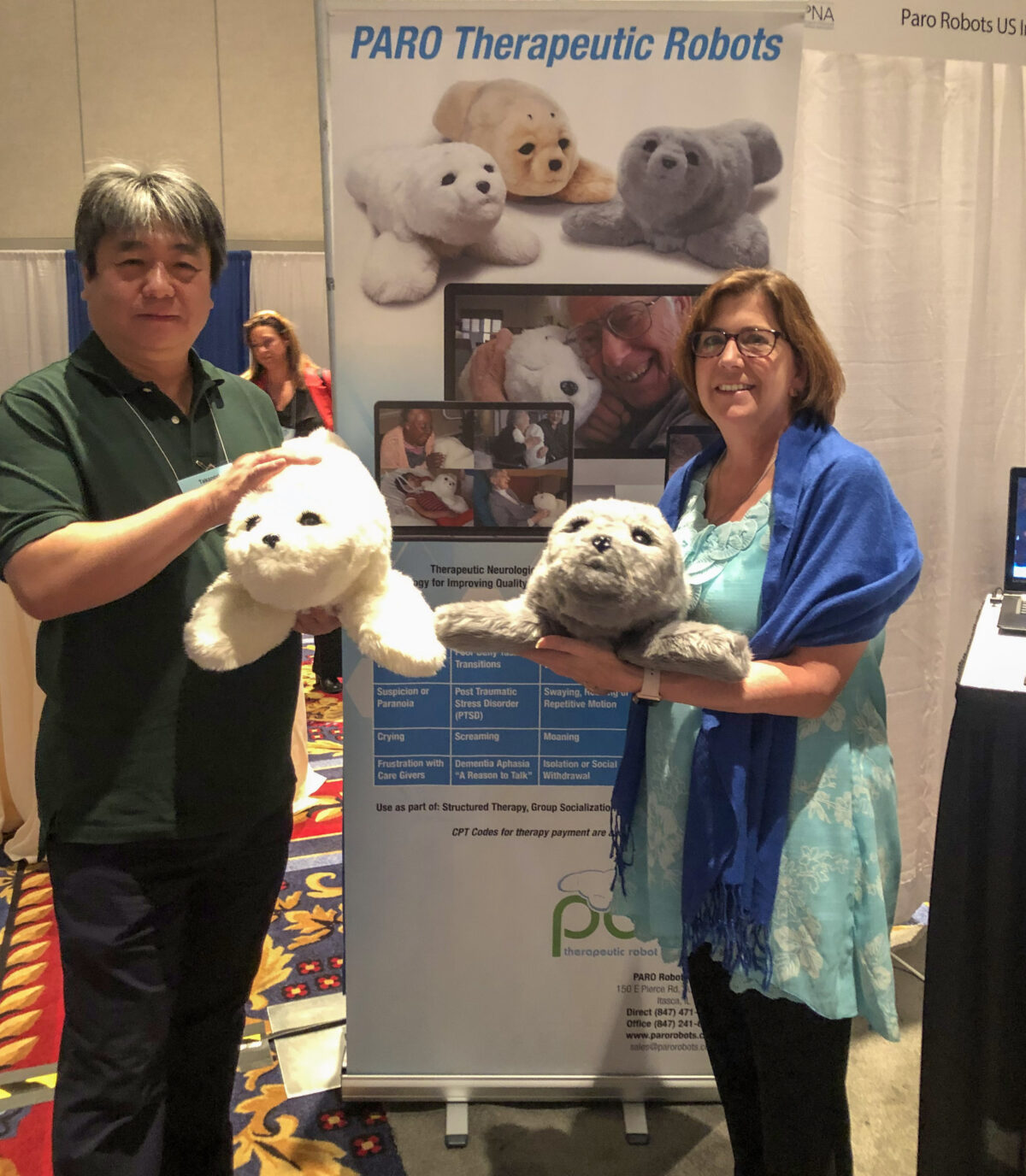Meet Lucy and Ricky, a pair of therapeutic robotic seals that have been helping patients at Penn Presbyterian Medical Center in West Philly. The Paro robots, as they’re known, were deployed as part of a study in the hospital’s acute care for elderly unit.
Yes, they are named after Lucy and Ricky from “I Love Lucy.”
Pamela Cacchione, a University of Pennsylvania nursing professor and nurse scientist at Penn Presbyterian, first saw a Paro at a conference.
“I thought these robots were the most ridiculous things I had ever seen,” Cacchione said, “until I actually picked one up and felt it and interacted with it myself.”
She pitched the idea to hospital management, got the green light, and in 2019 launched a study to see if the Paros could decrease patient agitation and pain symptoms. After pandemic delays, the project wrapped its data collection phase last summer.
Upshot: The robot seals helped.
Cacchione and her researchers found decreased agitation within the first 20 minutes of a patient interacting with the Paro robots, she said. By the end of cuddle time with Lucy or Ricky, patients’ pain scores had also decreased.
The unique thing about a Paro, compared to other soothing tools such as weighted blankets or coloring activities, Cacchione said, is that the robots interact with and respond to the patients. Not only do patients pet the robots and talk to them, but they can also brush them or give them baths.
Paros use artificial intelligence, specifically embodied AI — when intelligent systems can interact and learn from their environment. So the seals can learn their names and other characteristics that make them more pleasing to be around.
Why a robotic seal and not a dog? You won’t ‘expect too much’
Takanori Shibata, a chief senior research scientist at Japan’s National Institute of Advanced Industrial Science and Technology (known as AIST), first developed Paro robots in 1993 as a way to provide animal therapy in settings where live animals can’t be brought in. Currently in its ninth generation, the Paro has been involved in research studies in hospitals and extended care facilities around the world.

Shibata chose a baby harp seal because patients have certain expectations from common pets like cats and dogs. Plus, baby seals are cute, he told Technical.ly.
“In the cases of baby seals, as most people do not have experience of interaction with them, they may not compare the baby seal robot with a real baby seal,” Shibata said. “They do not expect too much [from] the robot.”
Each Paro has two light sensors, and uses three microphones for sound recognition and to figure out where voices are coming from. There are tactile sensors all over the robot’s body, temperature sensors and even whisker sensors.
At Penn Presbyterian, older adult patients typically interacted with their Paro for about 55 minutes, during which time it distracted them from trying to wander around the unit or pull on their IVs, Cacchione said. Overall, she described the study as “joyful.”
Moving forward, Cacchione now has 52 videos of patients interacting with Lucy and Ricky that her team has to analyze. They’re also gathering additional data about patients’ physiological responses to the robots.
Her team is currently looking for a place to store the robots on the unit. They hope to train all the staff on cleaning protocol so the unit can continue to use the Paros outside of the research study. Cacchione would also like to see the study expand to other units at Penn Presbyterian, such as trauma or intensive care.
An unexpected positive outcome was the reactions and feedback from nurses and other staff on the floor.
“Just having it on the unit was very positive for the clinicians,” Cacchione said. “I mean, they really enjoyed seeing their patients interacting with Paro. They’d stop and talk to them.”
This article has been updated to note Takanori Shibata’s affiliation with AIST







